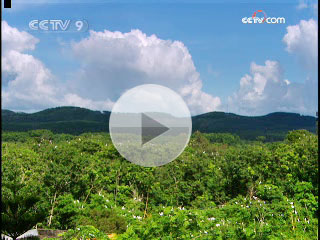------Program code: NS-080815-04355 (what's this?)
Source: CCTV.com
08-15-2008 10:43
 |
The food, after being digested in the craw, is easily absorbed. After they have fed, the parents set out to look for more food. They have no time to rest.
The seawater rushes into the mangrove forest through a tidal furrow. The tide never rises at the same time on two successive days. The fiddler crab has an internal timing mechanism that tells it when the high tide is due.
 |
The mudskipper also senses what is happening. It crawls along in search of the tidewater.
The grapsidae family escape the tide by climbing a tree – a natural shelter provided by the mangrove forest. The entocolax also hurry up a tree, where they’ll stay until the tide recedes again.
The fiddler crab is a sophisticated builder. It digs out a small piece of silt to fit in its cave before the tide covers the area. So there will always be some air inside, even if its home is flooded.
With the mudflat completely covered by the tide, the mangroves form a forest on the sea. Common land plants die in saltwater, even if the saline content is only a tenth that of seawater. With all its salt, the environment in which the mangroves grow could be described as the driest in the world.
The tide, checked by the seashore, produces wave after wave.
However, all is peace in the mangrove forest. The mangroves’ strong root systems neutralize the power of the waves and protect the croplands behind.
